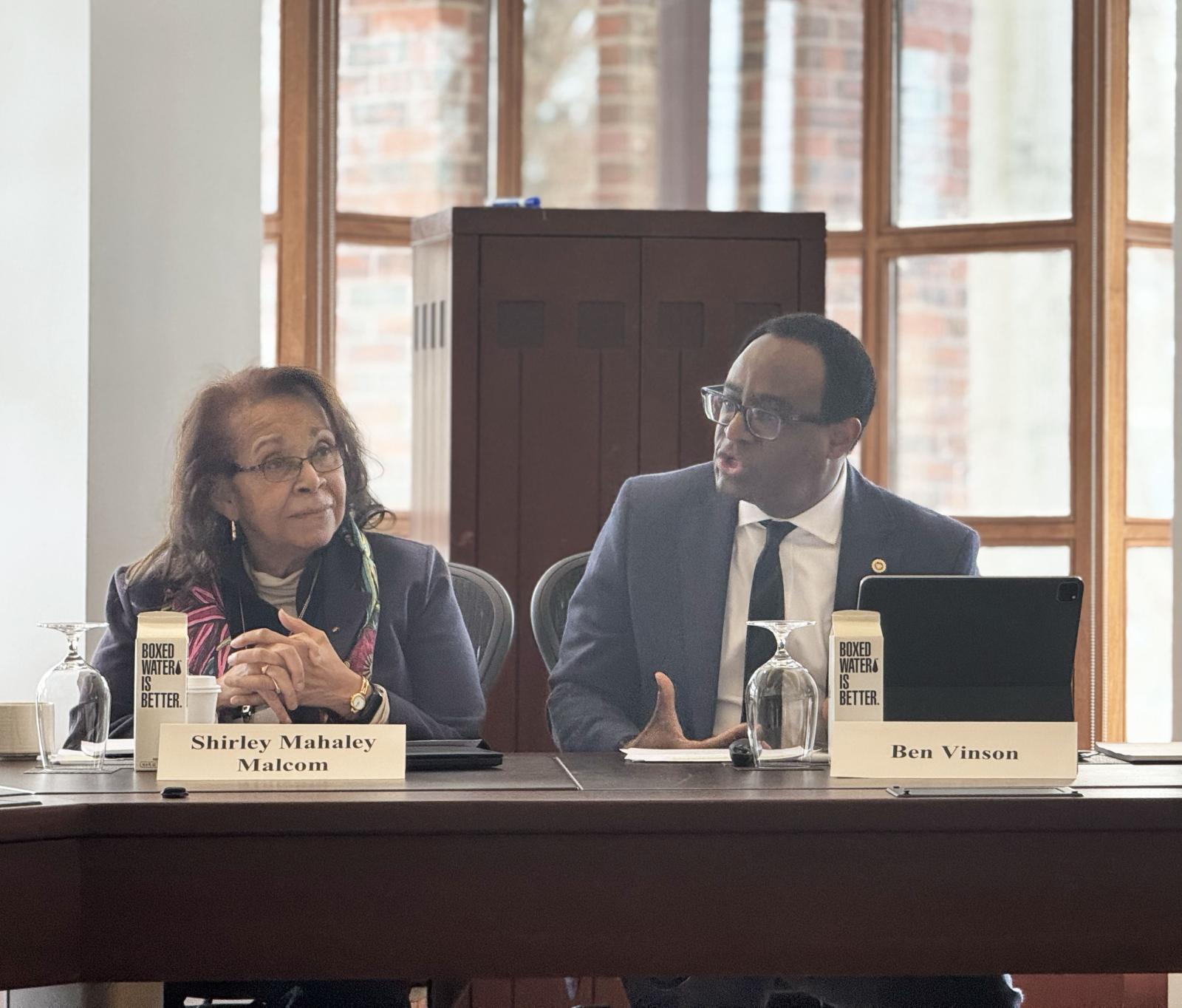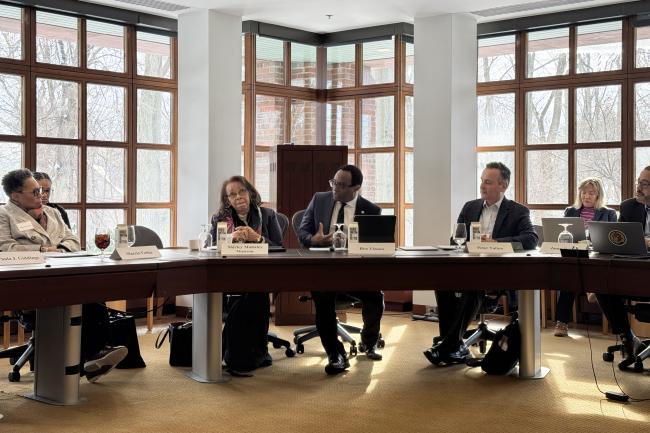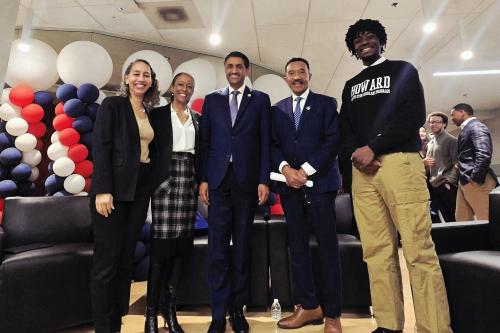In late January, the American Academy of Arts and Sciences and its president Laurie L. Patton, hosted an exploratory meeting on local institutions and housing with thought leaders in education, government, and beyond. Those in attendance at the Boston gathering included Howard University President Ben Vinson, III, Ph.D., Paula J. Giddings (BA ’69), author and Elizabeth A. Woodson professor emerita of Africana Studies at Smith College; Shirley M. Malcom, senior advisor and director at the American Association for the Advancement of Science; and former Secretary of Housing and Urban Development Marcia Fudge.
During the meeting, the leaders discussed the many issues related to housing, including how "anchor" institutions can stabilize and help grow communities. They also discussed the challenges presented by an emerging housing crisis and identifying government partners. Importantly, they explored the relationship between higher education and housing and ways colleges and universities can address the affordable housing needs within their own communities.

Howard President Ben Vinson, III, a member of the 2024 class of Academy inductees, began by highlighting how those in attendance can collaboratively “chart a path forward” when it comes to addressing housing challenges and lean into the opportunities presented by partnerships between institutions and the community.
When we thrive as an institution, our communities should thrive as well.”
“The roots we have in our community give us a moral imperative to be a ladder for our community members to climb,” said President Vinson. “This is to say that when we thrive as an institution, our communities should thrive as well.”
President Vinson's remarks were centered on the theme, “Housing, Anchor Institutions, and Community.” He asserted that a college's ideals help to guide the community that surrounds it, calling attention to the impact anchor institutions can have on their neighborhoods and surrounding areas. He focused on housing scarcity and affordability and explained Howard’s role within the Washington, DC community, calling the university a “legacy-building” anchor institution.
An anchor institution is defined by the Coalition of Urban and Metropolitan Universities as an “institution rooted in the local community in which it resides – rooted by mission, by invested capital, and by its relationships to students, employees, community partners, and vendors.”
“What we put into our community—the traditions, mission, ideals, and history we represent—these are passed on from generation to generation," said President Vinson. "Because of this, more than an anchor, we are a foundation, perhaps even a vital cornerstone to our communities. Since our inception, we have stood for truth, service, excellence, and achievement. These ideals also serve to guide our neighbors, and collectively we strive to achieve these ends.”
Vinson pointed to three guiding principles essential to Howard's decision-making as an anchor institution and economic investor. First, he said, Howard takes into account the challenges faced by the neighborhood in which it physically sits, such as gentrification, housing availability, access and affordability. Second, Vinson emphasized the need for trust among the institution's neighbors. Finally, he noted that Howard ensures that its initiatives are in line with the social and economic realities of the area so that members of the larger Howard community are empowered to thrive.
Howard has recently brought dozens of affordable housing units online adjacent to its campus, part of an effort to ensure that students with limited rental histories can find acceptable accommodations and so that other city residents can take advantage of the university's real estate initiatives. It is also engaged in the redevelopment of historic landmarks, ensuring that they are preserved but also repurposed for contemporary needs.
Vinson further assert that, community’s largest employers, universities can be “multipliers of economic growth and prosperity,” with more longevity than other “place-based” institutions. Howard University, he said, is “strongly rooted” in the fabric of the community it’s been a part of for 158 years. Vinson also discussed the importance of housing in the pursuit of economic opportunity, elaborating on Howard's current initiatives and real estate development strategies including how the university is finding ways to revitalize and preserve history, the importance of community partnerships, key investments, and more.
"Today, housing is a wealth creator, an equalizer, and it can be an investment that gives long-term security and dignity to those with homes," said Vinson. "Housing, and especially home ownership, can also create a sense of pride, not only in one’s abilities and achievement, but in the surrounding community in which they reside. Housing is a foundation to raise families. And along with education itself, housing provides a runway for success and long-term fulfillment. Housing can incubate talent, and safe housing can shield and protect people."
We believe that as we climb, we try to bring others along, ensuring that community members participate in the value we create.”
President Vinson ending his remarks the way he began them, emphasizing the importance of coming together, as leaders and with those in the community, to find solutions to addressing housing security. “We believe that as we climb, we try to bring others along, ensuring that community members participate in the value we create,” he said. “Together, we can—and will—make a lasting difference.”
The exploratory meeting continued with discussions around everything from what a dream community and housing’s place within it would look like to attendees, to ways local institutions can help address the housing crisis and how said institutions can partner with the government on housing development. Day two featured a fireside chat with former Secretary of Housing and Urban Development Marcia Fudge and culminated with ideas for a “blueprint” to be shared with local institutions and housing, as well as next steps for pushing the work forward.





